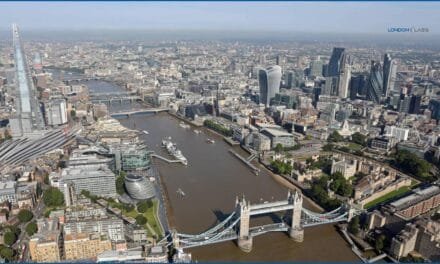Wood Street, located in Waltham Forest, East London, is a lively area rich in history, creativity, and culture. Known for its impressive street art, independent shops, and a strong sense of community, Wood Street is fast becoming one of London’s hidden gems. Whether you’re a long-time local, a first-time visitor, or someone considering a move to this dynamic neighborhood, this guide covers everything you need to know—from history and attractions to transport links and the food scene.
Wood Street dates back to the seventh century, originally one of the four settlements that made up Walthamstow. Over time, it evolved from an agricultural village into a bustling residential and commercial area.
- 17th Century: Prominent houses like the Clock House, built in 1706, were home to merchants like Sir Jacob Jacobson.
- 19th Century: With the arrival of the railway in 1873, terraced houses were built, joining Wood Street with the wider Walthamstow area.
- 20th Century: Two film production studios operated here during the early 1900s, making Wood Street a hotspot for early British cinema.
- Present Day: Today, Wood Street is a vibrant mix of historical charm and modern culture, with street art, unique local shops, and a strong community vibe.
What to See and Do in Wood Street
Wood Street is more than just a place to pass through. With its quirky, artistic atmosphere and a blend of historical landmarks, there’s something for everyone.
Must-See Attractions
-
Wood Street Indoor Market:
Once a cinema, this space is now home to 25 stalls selling vintage clothing, antiques, and art. It’s a haven for treasure hunters and those looking for unique finds. -
Wood Street Walls:
Don’t miss the fantastic street art from the Wood Street Walls project, which showcases vibrant murals throughout the area. Keep an eye out for the plumbing-themed piece by local artist Robert Lamb. -
St Peter’s Church:
A local historical landmark, this church boasts beautiful architecture and plays a central role in the community.
Food & Drink: A Growing Culinary Scene
In recent years, Wood Street’s food scene has exploded, with new cafes, restaurants, and pop-ups cropping up regularly. Whether you’re in the mood for a quick bite or a sit-down meal, the area offers a range of delicious options.
| Restaurant/Café | Type of Cuisine | Distance from Wood Street |
|---|---|---|
| Wood Street Coffee | Artisan Coffee | 2-min walk |
| The Duke | British Pub Classics | 7-min walk |
| Chingford Organic Bakery | Vegan Baked Goods | 3-min walk |
| Gastro Deli | European & Deli Specialities | 4-min walk |
The area has also seen a rise in vegan and organic food options, with spots like Chingford Organic Bakery offering plant-based delights.
Map of Wood Street
Accommodation Near Wood Street
With Wood Street’s growing popularity, accommodation options are expanding. The real estate market has become competitive, with property prices rising steadily due to new residential developments.
| Accommodation | Type | Average Price (2024) |
|---|---|---|
| The Royal Oak Hotel | Boutique Hotel | £100–£130 per night |
| Airbnb Flats | Various Options | £70–£160 per night |
| Eco-Living Flats | Modern & Sustainable | £1,500–£2,500 per month |
How to Get to Wood Street
Wood Street is well-served by public transport, making it easy to reach from central London and beyond.
- Overground: Wood Street Station offers direct Overground services to Liverpool Street Station in under 20 minutes.
- Bus Routes: The area is well-served by buses, including the 230 and W16 routes.
- Cycling: The council is planning to expand cycling paths, making it a bike-friendly area for locals and visitors.
Wood Street has come a long way from its humble beginnings as a small settlement. Today, it’s a vibrant, artistic neighborhood filled with independent shops, fantastic street art, and a warm community spirit. Whether you’re visiting for a day, looking to move, or just curious, Wood Street offers something for everyone. With its cultural attractions, growing food scene, and modern developments, it’s no wonder Wood Street is quickly becoming a sought-after spot in East London.
FAQs About Wood Street
What is Wood Street known for?
Wood Street is famous for its rich history, stunning street art (especially the Wood Street Walls project), and its quirky, independent market.
How do I get to Wood Street?
You can easily reach Wood Street via the London Overground from Liverpool Street Station or by using local bus routes such as the 230 or W16.
What’s the best thing to do in Wood Street?
Visitors should check out the Wood Street Indoor Market for vintage finds and explore the area’s street art. For a relaxing afternoon, grab a coffee at one of the local artisan cafes.
Is Wood Street a good place to live?
Yes, Wood Street has a strong community feel and offers affordable housing options, making it a popular choice for young professionals and families alike.
Are there any events or festivals in Wood Street?
Wood Street regularly hosts street art festivals, food markets, and community events. Check the We Are Wood Street initiative for the latest updates on events.
Can I find vegan and organic food options in Wood Street?
Absolutely! Wood Street has embraced the growing demand for vegan and organic cuisine, with several cafes and bakeries catering to this trend.
Is Wood Street suitable for families?
Yes, Wood Street is a family-friendly area with green spaces, good schools, and a safe, community-focused environment.



